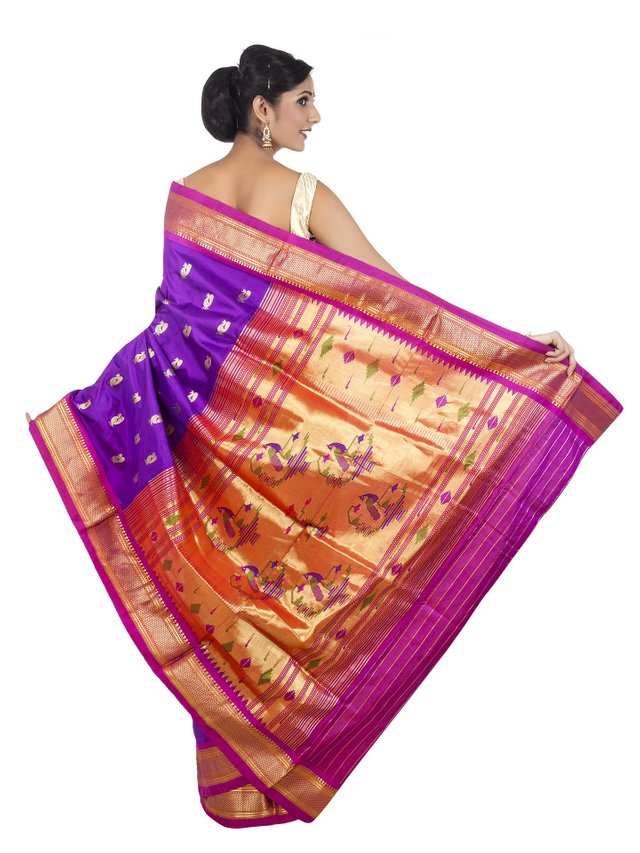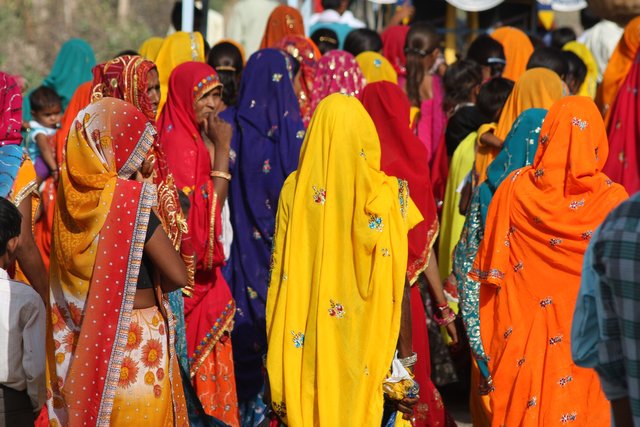Where and how the sari of Bangladesh weavers is made
Sari is the main garment worn by Bengali women since ancient times. Sarees are popular not only in Bangladesh but also in other parts of the Indian subcontinent. However, the earliest evidence of sari in Bengal has been found in several terracotta plaques from Chandraketugarh (2nd-1st century BC). Evidence of the use of sari is also found in some terracotta plaques of Paharpur (8th century). However, the style of wearing these saris in ancient times does not seem to be the same as it is now. At that time sari was worn on the lower part of the body like a dhoti.
Professor Niharranjan Roy writes in his book Adiparva on the history of Bengali, ‘The ancient method is similar to the way in which Bengali women of today compose adhobas with one or more punches around their waists, but ancient Bengali women like today did not cover their bodies by composing uttarabas with the help of sari; The general rule was to keep their northern bodies uncovered.
There are different types and methods of wearing sari in different regions. In the evolution of time, in the intermingling of different cultures and perhaps in the need of the overall situation, there have been many changes in the way Bengali women wear sari. Changes have taken place in the technique, dyeing and design of sari weaving.
It is mentioned in the Bengali dictionary that the word 'weaving' originated from the Sanskrit 'tantu'. However, at present there are many types of weaving machines in Bangladesh. Such as pit loom or hole loom, frame loom, Chittaranjan or Japanese loom, waist loom etc. In terms of antiquity, pit loom or hole loom can be called the original loom of Bengal region. The famous muslin and other textiles of Bengal were made from this pitlum or hole loom. These looms were made from common bamboo, wood, etc., which were readily available. In the Rupganj-Sonargaon area on the banks of the Shitalakshya river near Dhaka, designer Jamdani sari is still woven in ordinary looms.
Frame loom, Chittaranjan or Japanese weaving as well as fly shuttle, dobby or jacquard machine etc. have been introduced in Bangladesh relatively later. This modernity has also affected the technique of making sari. At present, the sari and other garments woven in different parts of Narsingdi, Tangail or Sirajganj have been acquired and assimilated by the weavers of Bangladesh.
The pit loom is the oldest weaving machine in our country, which is still used to make traditional jamdani. This loom was later added to the ‘fly shuttle’, meaning that the spider no longer has to be thrown by hand, but the spider stays in a tunnel, and with the help of a rope handle the weaver can carry the spider through the drawn thread in less time and faster. This makes weaving faster. It is also known as ‘knocking loom’. This ‘fly shuttle’ can of course also be attached to the frame loom. This knitting loom or flytail loom is used to weave sari in different parts of Bangladesh including Tangail-Sirajganj. However, a large number of Chittaranjan or Japanese looms are being used in sari weaving at present. This loom can be called 'semi-automatic'. Its productivity is relatively high.
Dobby and Jacquard machines for design were added to these looms during the British colonial period. With the help of these two machines it is possible to weave different types of complex designs quickly and easily. Dobby machines are used for general designs and jacquard machines for relatively complex designs. Jacquard machines are locally called ‘jackets’ or ‘garlands’.
When it comes to weaving sari, inevitably it comes to Dhaka sari. We can mention Jamdani as an example of Dhakai saree, which still survives while maintaining continuity. However, apart from Jamdani, many other types of sari were made in Dhaka. Dhakai sari is well known for its weaving skills and fine fabrics.
In the last half of the eighteenth century, in Murshidabad, West Bengal, in a part of the Jiaganj area, a specially designed silk cloth appeared. This particular style of clothing is known as 'Baluchari'. The main feature of the shelf is its design. At that time weaving did not have the opportunity to design as desired. But Baluchari weavers invented a method or technique using indigenous looms that made it possible to weave many intricate designs. Within the nineteenth century, the real Baluchari sari became extinct in the first half of the twentieth century. However, Baluchari sari is still made, but with the help of jacquard machine.
Basically different natural accessories — different types of flowers, herbs, birds, butterflies, peacocks, etc. This trend continues today. In addition to advanced weaving techniques, various assimilations and additions of designs are the special features of Tangail sarees. Apart from Jamdani and Baluchari, Tangail sarees are especially significant in terms of designs. The initial fame of Tangail weaver's sari is due to its weaving technique and fineness of fabric and for this Basak weavers can claim special credit. The Basak weavers of Tangail are actually emigrant weavers, whose tribes are Dhaka and Dhamrai. Probably when the misfortune of Dhakai Muslin started in the nineteenth century, they migrated to Tangail. Later, in the aftermath of partition in 1947, a significant portion of the weavers of Tangail spread to Phulia, Samudragarh, Dhatrigram, etc. in West Bengal and formed new colonies. Thus a new center of Tangail saree has been established in West Bengal.


You've got a free upvote from witness fuli.
Peace & Love!
Repost in the next 6 days as we had massive posts this week